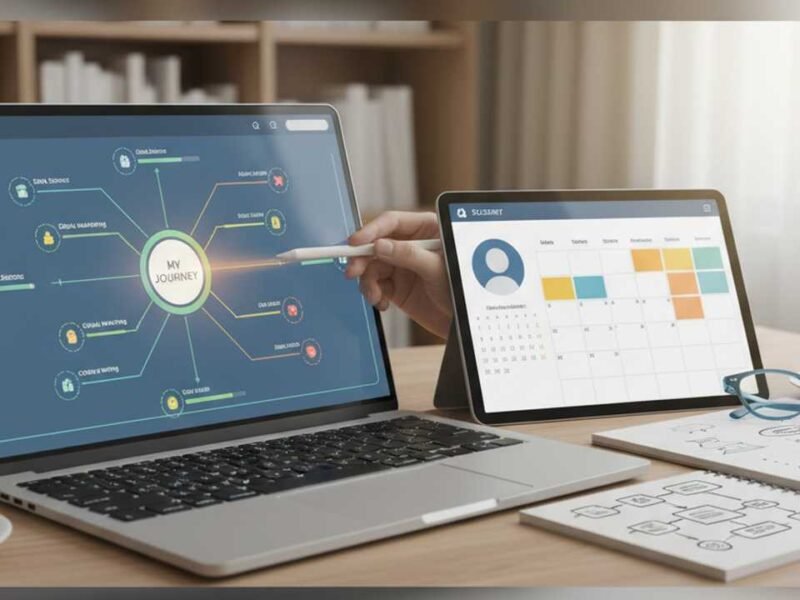In the ever-evolving landscape of education, traditional methods are rapidly giving way to innovative approaches that prioritize collaboration, accessibility, and real-world application. One such transformative method is peer-to-peer (P2P) learning, a dynamic educational model that empowers learners to share knowledge, solve problems collectively, and engage in meaningful discussions. This guide delves into the essence of P2P learning, its integration into online platforms, and how organizations like Evergreen Education Group are pioneering this approach to create more effective and engaging learning environments.
Understanding Peer-to-Peer Learning: A Collaborative Revolution
Peer-to-peer learning is not merely a trend; it’s a paradigm shift in how we perceive education. Unlike traditional teacher-centered models, P2P learning places students at the heart of the educational process. In this model, learners collaborate to explore topics, solve problems, and teach each other, fostering a deeper understanding through active engagement. This approach not only enhances comprehension but also builds critical thinking, communication, and interpersonal skills.
The rise of digital platforms has significantly amplified the reach and effectiveness of P2P learning. Online forums, discussion boards, and collaborative tools enable students from diverse backgrounds and geographical locations to connect, share insights, and learn together. This global connectivity breaks down barriers, making education more inclusive and accessible than ever before.
The Role of Online Learning Platforms in Facilitating P2P Learning
Online learning platforms serve as the backbone of modern education, providing the infrastructure necessary for P2P learning to thrive. These platforms offer a plethora of tools designed to enhance collaboration, such as real-time messaging, video conferencing, shared workspaces, and peer assessment systems. By integrating these features, platforms create an environment where learners can easily interact, collaborate, and learn from one another.
Moreover, online platforms offer flexibility, allowing learners to engage in P2P learning at their own pace and on their own schedule. This flexibility is particularly beneficial for adult learners and professionals who may have other commitments but still wish to pursue continuous learning opportunities. The asynchronous nature of many online platforms ensures that learning is not confined to a specific time or place, making education more adaptable to individual needs.
Benefits of Peer-to-Peer Learning in Online Education
The advantages of incorporating P2P learning into online education are manifold. Firstly, it promotes active learning, where students take responsibility for their own learning process. This active involvement leads to better retention and understanding of the material. Secondly, P2P learning encourages critical thinking and problem-solving skills, as students are often required to analyze information, discuss different perspectives, and arrive at solutions collaboratively.
Additionally, P2P learning fosters a sense of community among learners. In traditional settings, students may feel isolated or disconnected, but online platforms facilitate the formation of learning communities where individuals can support and motivate each other. This sense of belonging can enhance student engagement and reduce feelings of alienation, leading to improved learning outcomes.
Implementing Peer-to-Peer Learning: A Strategic Approach
Successfully implementing P2P learning requires a strategic approach that aligns with the goals of the educational program and the needs of the learners. The first step is to select an appropriate online platform that offers the necessary tools and features to support collaboration. Platforms should provide functionalities such as discussion forums, group projects, and peer review systems to facilitate interaction among students.
Next, it’s essential to design the curriculum in a way that encourages collaboration. This can be achieved by incorporating group assignments, collaborative projects, and peer assessments into the learning plan. By structuring the curriculum to promote teamwork, educators can ensure that students engage in meaningful interactions that enhance their learning experience.
Overcoming Challenges in Peer-to-Peer Learning
While P2P learning offers numerous benefits, it also presents certain challenges that need to be addressed to ensure its effectiveness. One common issue is the disparity in participation levels among students. Some learners may be more active and engaged than others, leading to an imbalance in the learning experience. To mitigate this, educators can implement strategies such as assigning roles within groups, setting clear expectations, and monitoring participation to ensure equitable involvement.
Another challenge is the potential for misinformation. Since students are sharing knowledge with one another, there’s a risk of inaccuracies being disseminated. To counteract this, it’s crucial to establish guidelines for information sharing, encourage critical evaluation of sources, and provide opportunities for feedback and clarification. By fostering a culture of critical thinking and accountability, the integrity of the learning process can be maintained.
Case Study: Evergreen Education Group’s Implementation of P2P Learning
Evergreen Education Group stands at the forefront of integrating P2P learning into online education. Through their innovative programs, they have successfully created environments where learners actively collaborate, share knowledge, and engage in meaningful discussions. By leveraging advanced technologies and pedagogical strategies, Evergreen Education Group has developed a model that exemplifies the potential of P2P learning in the digital age.
One of their notable initiatives includes the development of a comprehensive online platform that facilitates peer interactions through discussion forums, collaborative projects, and peer assessments. This platform not only supports academic learning but also fosters the development of soft skills such as communication, teamwork, and leadership. The success of this initiative underscores the effectiveness of P2P learning in enhancing educational outcomes and preparing students for the challenges of the modern world.
Future Trends in Peer-to-Peer Learning
The landscape of education is continuously evolving, and P2P learning is poised to play a pivotal role in shaping its future. Emerging technologies such as artificial intelligence, virtual reality, and blockchain are expected to further enhance the capabilities of online learning platforms, providing more personalized and immersive learning experiences.
AI can be utilized to create adaptive learning pathways that cater to the individual needs of students, ensuring that each learner receives the appropriate level of challenge and support. Virtual reality has the potential to create immersive learning environments that simulate real-world scenarios, allowing students to engage in experiential learning. Blockchain technology can offer secure and transparent systems for credentialing and assessment, ensuring the integrity of the learning process.
As these technologies continue to develop, they will likely be integrated into P2P learning models, creating more dynamic and effective educational experiences. The future of education lies in the collaborative efforts of learners, educators, and technology, working together to create learning environments that are engaging, inclusive, and effective.
Conclusion: Embracing the Future of Learning
Peer-to-peer learning represents a significant shift in the educational paradigm, emphasizing collaboration, active engagement, and shared knowledge. By leveraging online platforms and innovative strategies, educators can create environments that foster these principles, leading to enhanced learning outcomes and the development of essential skills for the future.
Organizations like Evergreen Education Group are leading the way in implementing P2P learning, demonstrating its effectiveness in creating dynamic and inclusive learning experiences. As the educational landscape continues to evolve, embracing P2P learning will be crucial in preparing learners for the challenges and opportunities of the 21st century.

